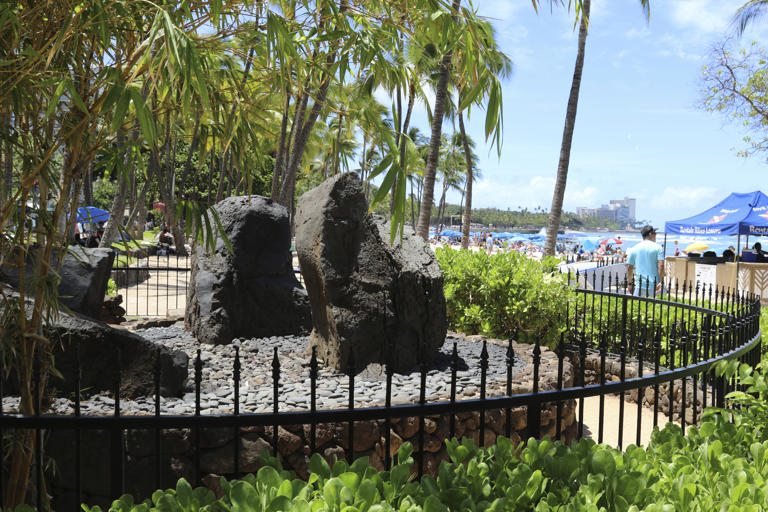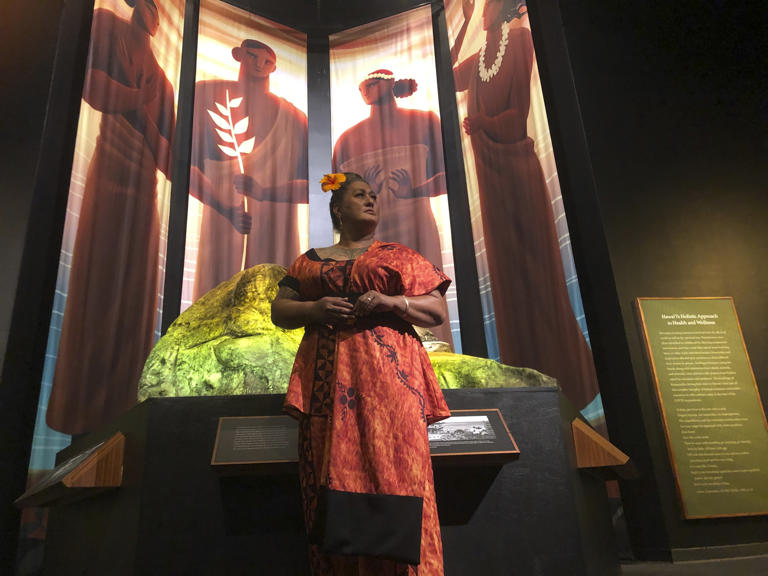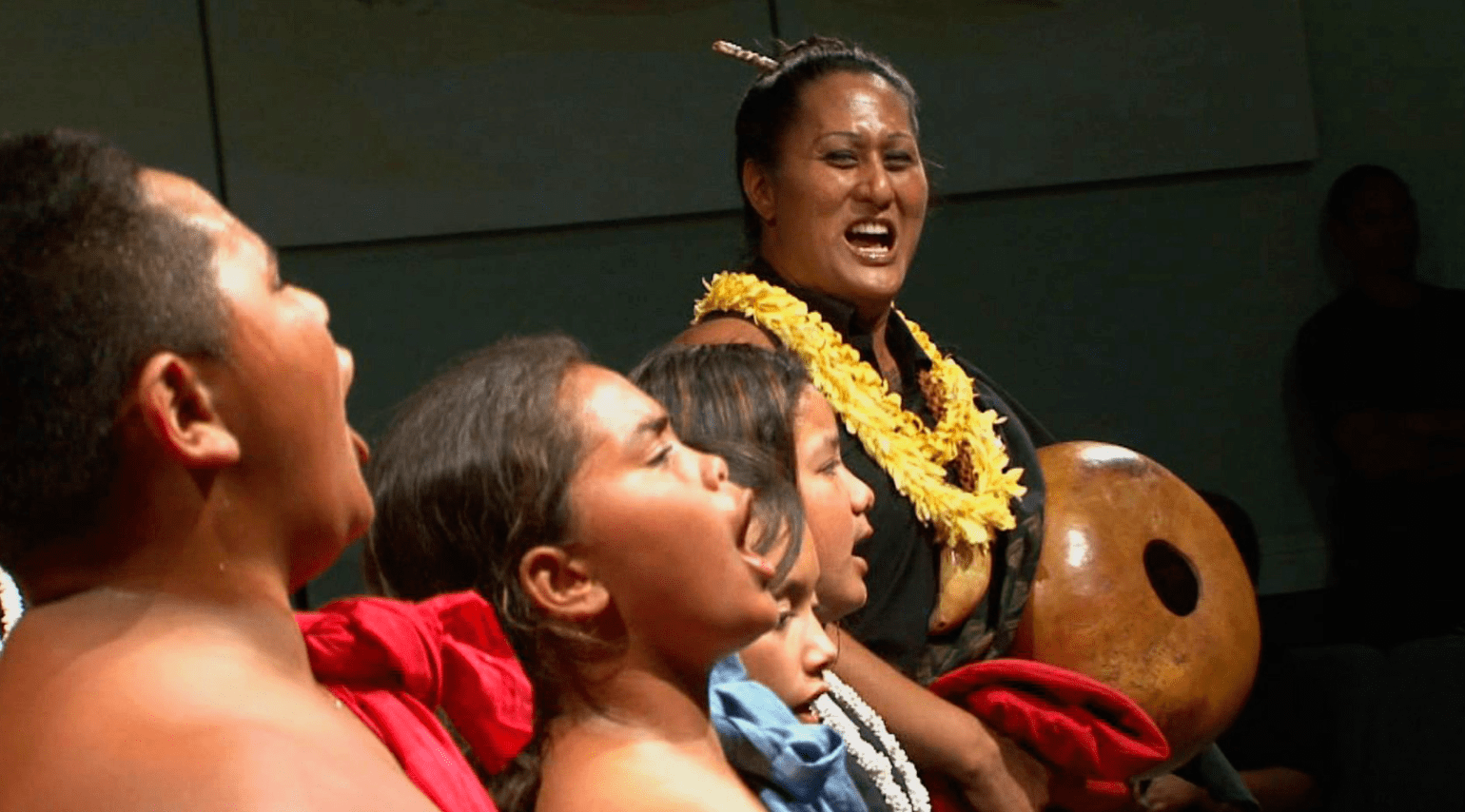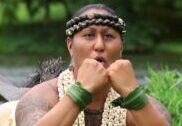
More than 500 years ago, Hawaiians placed four boulders on a Waikiki beach to honor visitors from the court of Tahiti’s king who had healed the sick. They were “mahu,” which in Hawaiian language and culture refers to someone with dual male and female spirit and a mixture of gender traits.
 The stones were neglected for many years, as Christian missionaries and other colonizing Westerners suppressed the role of mahu in Hawaiian society. At one point a bowling alley was built over the boulders. Even though Officials restored the stones multiple times since the 1960s the informational plaques installed next to them omitted references to mahu.
The stones were neglected for many years, as Christian missionaries and other colonizing Westerners suppressed the role of mahu in Hawaiian society. At one point a bowling alley was built over the boulders. Even though Officials restored the stones multiple times since the 1960s the informational plaques installed next to them omitted references to mahu.
Hinaleimoana Wong-Kalu is mahu and one of the exhibit’s curators who said the healers were revered for their skillm and hopes their story will show children in Hawaii that “proper Hawaiian culture” doesn’t pass judgment against those “who have elements of duality.” “They were respected and honored because the people knew that their male and female duality made them even more powerful a healer,” Wong-Kalu said.
 The earliest known written account of the mahu healers is a 1906 manuscript by James Alapuna, the son-in-law of Archibald Cleghorn, who owned the Waikiki property where the stones were at the time. Cleghorn’s wife, Princess Likelike, and daughter, Princess Kaiulani, were known to place seaweed and offer prayers at the stones when they swam...
The earliest known written account of the mahu healers is a 1906 manuscript by James Alapuna, the son-in-law of Archibald Cleghorn, who owned the Waikiki property where the stones were at the time. Cleghorn’s wife, Princess Likelike, and daughter, Princess Kaiulani, were known to place seaweed and offer prayers at the stones when they swam...
Many Hawaiians grew up not knowing about Hawaiian concepts of mahu or the stones because the American businessmen who overthrew the Hawaiian monarchy in 1893 banned Hawaiian language instruction in schools and discouraged speaking it in homes. Generations of Hawaiians lost connections to cultural traditions.
Wong-Kalu, 50, said as a child she was made to believe mahu was a derogatory word. She remembers being among those who would sit on the stones and drape towels over them after swimming, oblivious to their significance.
Mahu are akin to “two-spirit” common in many Native American cultures, Wong-Kalu said, adding there are physical, emotional, mental and spiritual elements to being mahu. The representation of male and female depends on the person, she said.
“In Hawaii, one could exist really in the middle,” she said.
 During both periods, waves of homophobia and transphobia washed over Honolulu. In the 1960s, a new state law prohibited cross-dressing and police forced drag performers to wear a button saying: “I Am A Boy.” Three decades later, there was a backlash in Hawaii and nationally when the Hawaii Supreme Court sided with same-sex couples seeking the right to marry.
During both periods, waves of homophobia and transphobia washed over Honolulu. In the 1960s, a new state law prohibited cross-dressing and police forced drag performers to wear a button saying: “I Am A Boy.” Three decades later, there was a backlash in Hawaii and nationally when the Hawaii Supreme Court sided with same-sex couples seeking the right to marry.
Tatiana Kalaniopua Young, a Native Hawaiian anthropologist, mahu and a director of the Hawaii LGBT Legacy Foundation, said the story the stones and healers helped her family understand that she was not “this weird creature that’s outside of the norm.” And that in a Hawaiian sense, she was part of the norm.
“It gave me a sense of place and purpose as a mahu and it really made me proud to be Kanaka Maoli, or Native Hawaiian,” she said.
THE HEALER STONES OF KAPAEMAHU https://www.bishopmuseum.org/kapaemahu/ June 18 – October 16, 2022

